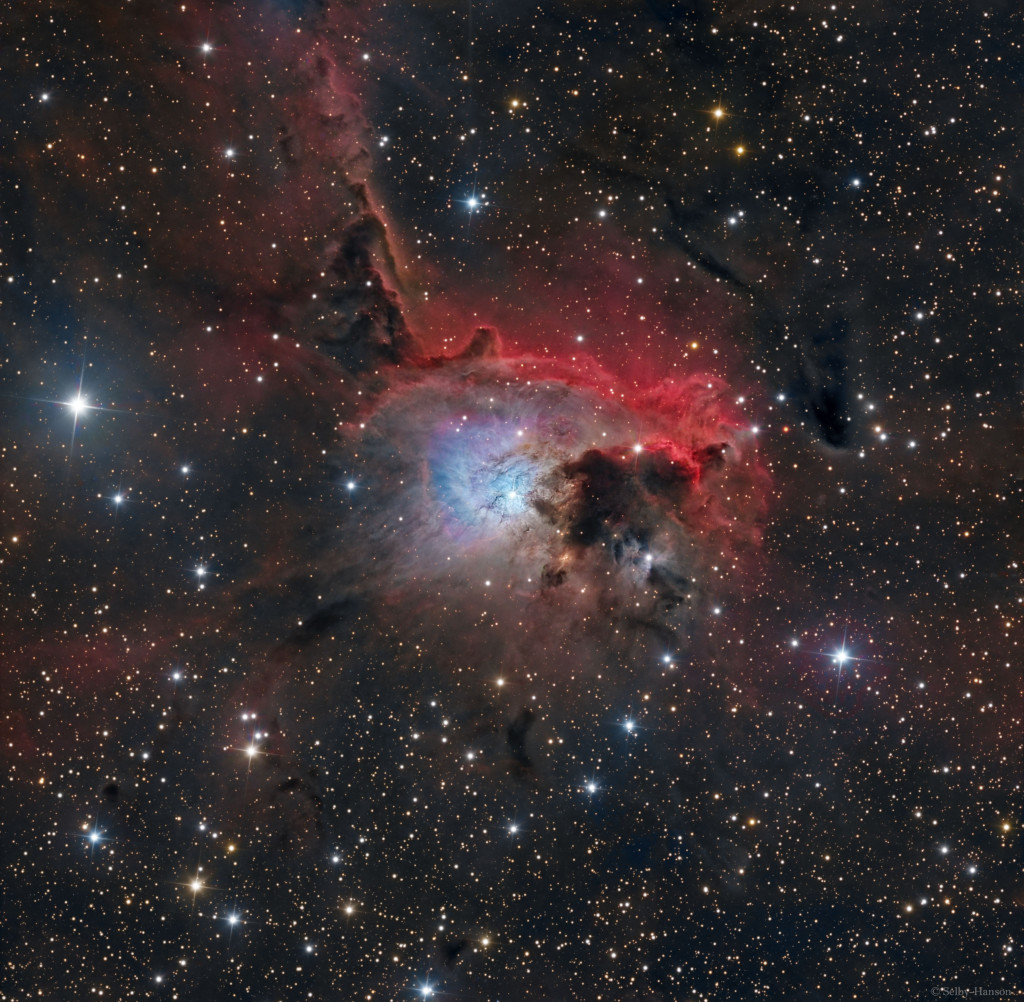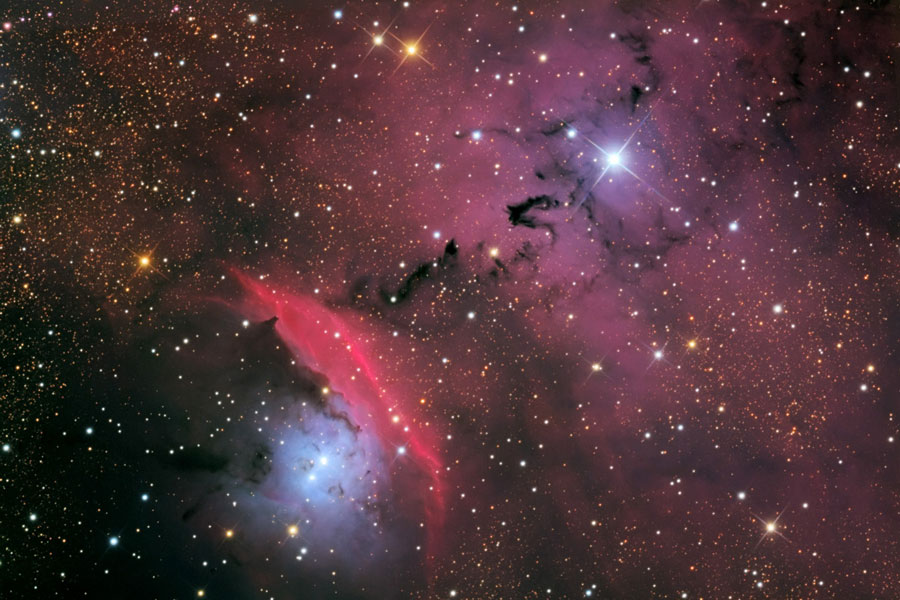Today's APOD is so beautiful!

But I'm trying to make head or tails of it.

NGC 2626 is a part of the larger HII region RCW 27 in Vela. Let's take a look at a picture of the entire RCW 27 region by Sergio Eguivar, and later compare this region with NGC 6559 in Sagittarius:
RCW 27 with NGC 2626 at upper left and HD 73882 below center.
Credit: Sergio Equivar.
In Sergio Eguivar's image, you can see NGC 2626 at upper left (at 11 o'clock). Note that while the dark dust cloud is seen to the right of the blue reflection nebula in Eguivar's image, like it is in the APOD, the bright red ridge of H-alpha emission is below the blue reflection nebula in Eguivar's image instead of above it, as in the APOD.
Anyway. Note that the bright red ridge to one side of the blue reflection nebula of NGC 2626 is directly "downwind" from O-type star HD 73882. It seems clear to me that the bright red ridge of NGC 2626 is being ionized by HD 73882.
However, also note some pink nebulosity inside the "cave" carved by the B1V-type star inside the dusty nebula. This pink nebulosity is not ionized from the outside by HD73882, but by the B1V-type star inside. This is a reminder that stars of spectral class B1 are just hot enough to ionize a faint emission nebula of their own.
Now let's look at NGC 6559 in Sagittarius:
NGC 6559 is a blue reflection nebula with a bright red ridge of emission nebulosity on one side. In Adam Block's image, you can see NGC 6559 at lower left, and O-type star 11 Sgr at upper right. You can see a dark dust cloud to the left and upper left of NGC 6559, and there is a tendril of dust snaking its way from NGC 6559 towards 11 Sgr. It seems very likely to me that the O-type star and the nebula some distance away from it are connected.
The red ridge of NGC 6559 is very bright and tightly "squashed", as if it was being pressurized from two directions. I think that is exactly what is happening: The O-type star is bearing down on it with a torrent of ultraviolet photons and a strong stellar wind, while the two stars inside the blue reflection nebula - one B2 and one B0-type star - are joining forces to try to push it away from them.
The red ridge of NGC 2626 is "fluffier" than the red ridge of NGC 6559. I think that HD 73882 may be farther away from NGC 2626 than 11 Sgr is from NGC 6559. Also, 11 Sgr is probably hotter and more powerful than HD 73882, and the two blue stars inside NGC 65669 blow a stronger stellar wind than the B1V star (TYC 7666-2487-1, what a mouthful) inside NGC 2626.
Ann
 NGC 2626 along the Vela Molecular Ridge
NGC 2626 along the Vela Molecular Ridge




